
Physical Review Research
Scope & Guideline
Illuminating the path of scientific exploration.
Introduction
Aims and Scopes
- Quantum Mechanics and Quantum Information:
Research in this area explores the foundations of quantum mechanics, quantum computing, and quantum information theory, including studies on quantum entanglement, quantum algorithms, and noise mitigation strategies. - Condensed Matter Physics:
This scope covers investigations into the properties of solid and liquid states of matter, including superconductivity, magnetism, and correlated electron systems, with an emphasis on novel materials and phase transitions. - Statistical Mechanics and Thermodynamics:
Studies that delve into the behavior of systems with many degrees of freedom, emphasizing entropy, fluctuations, and the thermodynamic properties of quantum and classical systems. - Optics and Photonics:
Research focusing on the interaction of light with matter, including nonlinear optics, photonic devices, and quantum optics, particularly in the context of generating and manipulating quantum states. - Biophysics and Soft Matter:
This area encompasses the physics of biological systems and soft materials, exploring phenomena like active matter, cellular dynamics, and the mechanical properties of biological tissues. - Plasma Physics and Quantum Gases:
Investigations into the behavior of plasmas and ultracold gases, including studies on non-equilibrium dynamics, quantum phase transitions, and the interaction of light with matter in these contexts. - Nanotechnology and Quantum Materials:
Research on the unique properties of materials at the nanoscale, including quantum dots, nanostructures, and their applications in quantum technologies. - Complex Systems and Networks:
This scope includes studies on the dynamics of complex systems, including social networks, ecological systems, and the mathematical modeling of interactions in large networks.
Trending and Emerging
- Machine Learning and AI in Physics:
There is a notable increase in the application of machine learning and artificial intelligence techniques to solve complex problems in physics, including optimization in quantum computing and data analysis in experimental physics. - Quantum Technologies and Applications:
Research into quantum technologies, including quantum computing, quantum cryptography, and quantum sensing, is rapidly expanding as advancements in these fields promise groundbreaking applications. - Topological Phases of Matter:
An increasing number of studies are focusing on topological phases and their implications in condensed matter physics, particularly in the context of topological insulators and superconductors. - Active Matter and Biological Systems:
Research on active matter, which includes self-propelled particles and biological systems, is gaining traction as physicists seek to understand collective dynamics and emergent behaviors in these systems. - Non-Hermitian Physics:
The exploration of non-Hermitian systems and their unique properties, including exceptional points and nonreciprocal effects, is becoming a significant area of interest in both theoretical and experimental research. - Quantum Thermodynamics:
Investigations into quantum thermodynamic processes are emerging, particularly those that bridge quantum mechanics with thermodynamic principles, leading to new insights into energy transfer and coherence. - Complex Networks and Systems Dynamics:
Research on complex networks, including social dynamics and biological interactions, is trending as physicists seek to understand the underlying mechanics of these interconnected systems.
Declining or Waning
- Traditional Classical Mechanics:
Research focusing solely on classical mechanics without quantum considerations has seen a decrease, as more studies integrate quantum mechanics or explore quantum-classical interfaces. - Static Theoretical Models:
The reliance on static models in theoretical physics is declining as researchers increasingly adopt dynamic, computational, and statistical approaches to better capture complex behaviors. - Homogeneous Systems:
Research on homogeneous systems is becoming less prevalent, as the focus shifts to understanding inhomogeneous and complex systems, particularly in materials science and biophysics. - Single-Disciplinary Studies:
The trend towards interdisciplinary research is leading to a decline in studies that are strictly confined to a single discipline, as researchers seek to address complex problems that span multiple fields.
Similar Journals
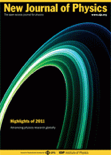
NEW JOURNAL OF PHYSICS
Unveiling the universe, one discovery at a time.NEW JOURNAL OF PHYSICS, published by IOP Publishing Ltd, is a prestigious open-access journal that has been at the forefront of the physics community since its inception in 1998. With an impact factor that places it in the Q1 category of Physics and Astronomy (miscellaneous) and a commendable ranking of #49 out of 243 in the general physics and astronomy category according to Scopus, this journal is recognized for its significant contribution to advancing research in the field. The journal caters to a broad scope of topics, providing a platform for the dissemination of cutting-edge research findings and innovative theoretical explorations. Operating from the United Kingdom, it offers a truly international perspective, making its contents accessible and impactful to a global audience. With robust open-access options, the NEW JOURNAL OF PHYSICS ensures that research findings are freely available, promoting collaboration and knowledge sharing among researchers, professionals, and students alike. This commitment to accessibility, combined with its high-quality content, makes it an essential resource for anyone engaged in the physics community.

JOURNAL OF STATISTICAL PHYSICS
Exploring the intricate dance of statistics and physics.The Journal of Statistical Physics, published by Springer, is a premier academic journal that has made significant contributions to the fields of Mathematical Physics and Statistical and Nonlinear Physics since its inception in 1969. With a strong reputation reflected in its 2023 rankings—placing it in Q2 of both categories and achieving an impressive Scopus rank of #22 in Mathematical Physics and #25 in Statistical and Nonlinear Physics—this journal serves as a vital platform for researchers, professionals, and students. The impact factor of the journal underscores its importance in disseminating cutting-edge research and theoretical developments. Authors are invited to submit original research articles that explore the intricate complexities of statistical mechanics, quantum physics, and related disciplines, fostering deep insights and academic discourse. Although the journal does not currently offer open access, its robust editorial standards and commitment to advancing knowledge make it an essential resource for those engaged in these dynamic fields.
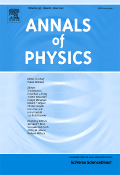
Annals of Physics
Unveiling the mysteries of the cosmos through rigorous research.Annals of Physics is a premier journal published by Academic Press Inc Elsevier Science, specializing in the expansive field of Physics and Astronomy. Since its inception in 1957, this journal has played a pivotal role in disseminating high-quality research and advancements across various sub-disciplines of physics. With a notable impact factor making it rank in the Q1 category for 2023, it stands among the top tier of scholarly publications, specifically sitting at Rank #63 out of 243 in the field, placing it in the 74th percentile according to Scopus metrics. Researchers are encouraged to submit their findings to reach a broad audience without the constraints of Open Access fees, promoting extensive visibility within the academic community. As we look ahead to 2024, Annals of Physics continues to be an essential resource for professionals, students, and academics striving to advance the frontiers of knowledge in physics and astronomy.
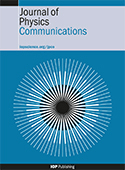
Journal of Physics Communications
Where Physics Meets Open Access ExcellenceJournal of Physics Communications, published by IOP Publishing Ltd, serves as a significant platform for the dissemination of innovative research in the realm of physics and astronomy. Since its inception in 2017, this Open Access journal has fostered a collaborative environment, allowing researchers, professionals, and students to share their findings and ideas without barriers. With an ISSN of 2399-6528, the journal has established its credibility in the academic community, achieving a ranking of Q3 in the 2023 category of Physics and Astronomy (miscellaneous), as well as a respectable position in Scopus with a rank of #122 out of 243 in its field. The journal's focus is on bridging theoretical concepts and practical applications, making it an essential resource for those engaged in the evolving landscape of physics. The Journal of Physics Communications not only aims to advance knowledge but also to inspire interdisciplinary collaboration, inviting contributions from diverse areas within physics. Authors and readers alike will find this journal particularly beneficial to stay updated on emerging trends and innovative research.
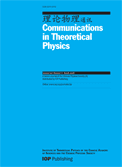
COMMUNICATIONS IN THEORETICAL PHYSICS
Illuminating the pathways of theoretical inquiry.COMMUNICATIONS IN THEORETICAL PHYSICS is a distinguished journal published by IOP Publishing Ltd, focusing on the broad and evolving field of theoretical physics. With an ISSN of 0253-6102 and an E-ISSN of 1572-9494, this journal provides a platform for the dissemination of innovative research that contributes to the understanding of complex physical concepts. Situated in the United Kingdom, it has established itself as a pivotal resource from 1996 to 2024, achieving a commendable Q2 ranking in the category of Physics and Astronomy (miscellaneous) for 2023. With a Scopus ranking of #18 out of 81 in its category, demonstrating a 78th percentile, this journal plays a crucial role in enhancing scholarly communication among researchers, professionals, and students alike. Although it does not currently offer Open Access options, the journal's comprehensive scope and commitment to high-quality peer-reviewed research underline its significance in the scientific community, making it an essential reading for anyone engaged in theoretical physics.

EUROPEAN PHYSICAL JOURNAL D
Unveiling the Mysteries of the Quantum WorldEUROPEAN PHYSICAL JOURNAL D, published by SPRINGER, stands as a pivotal resource in the field of Atomic and Molecular Physics, and Optics. With an ISSN of 1434-6060 and an E-ISSN of 1434-6079, this journal has established itself as a platform for high-quality, peer-reviewed research, catering to a diverse audience of researchers, professionals, and students. Notably, the journal is classified in the Q3 quartile for 2023, reflecting a respectable standing within its category, ranked #123 out of 224 in Scopus, with a 45th percentile. Covering a wide range of topics through contributions that span from 1998 to 2024, the journal encourages the dissemination of innovative ideas and groundbreaking studies in the rapidly evolving domain of atomic and molecular science. By offering open access publication options, EUROPEAN PHYSICAL JOURNAL D enhances the reach and impact of its authors' work, ultimately fostering a greater understanding of complex physical phenomena.

Turkish Journal of Physics
Innovating insights in the world of physics.Turkish Journal of Physics, established in 1994 and published by the Tubitak Scientific & Technological Research Council Turkey, is a prominent platform for the dissemination of innovative research in the field of physics and related areas. With an ISSN of 1300-0101 and an E-ISSN of 1303-6122, this journal has carved a niche in the academic community, evidenced by its ranking within the Q3 category in the 2023 evaluation of Physics and Astronomy. As it converges its published works toward the year 2024, researchers and scholars are encouraged to engage with its rich repertoire of studies that covers general physics and astronomy, currently holding a Scopus rank of #96 out of 243, placing it in the top 60th percentile. The Turkish Journal of Physics serves as a vital resource for advancing knowledge, fostering collaborative research, and providing insights into contemporary advancements in the discipline. While it operates under a subscription model, the quality and impact of its peer-reviewed articles make it an essential read for professionals and students alike, looking to stay informed on critical developments within the physics community.

Frontiers of Physics
Elevating Physics Knowledge to New HeightsFrontiers of Physics, published by Higher Education Press, is a premier open-access journal dedicated to fostering innovative research and excellence within the field of physics. With an ISSN of 2095-0462 and an E-ISSN of 2095-0470, this rapidly growing journal has established itself as a valuable platform for disseminating cutting-edge findings, covering a diverse range of topics from theoretical frameworks to experimental advancements. Notably, Frontiers of Physics has achieved an impressive Q1 ranking in the 2023 Scopus Quartiles for Physics and Astronomy, securing a competitive 5th out of 81 positions in its category, reflecting a high impact factor that underscores its importance to the scientific community. Since its inception in 2011 and continuing through 2024, the journal aims to bridge the gap between academia and industry, encouraging collaboration among researchers, professionals, and students alike. Its commitment to open access ensures that high-quality research is readily accessible, thereby promoting knowledge sharing and advancement in the global physics community. Explore the potential of your research in Frontiers of Physics, where the future of physics flourishes.

PHYSICAL REVIEW B
Exploring the Depths of Electronic and Magnetic MaterialsPHYSICAL REVIEW B, published by the American Physical Society, is a leading journal in the field of condensed matter physics and materials science, particularly focusing on electronic, optical, and magnetic materials. With an ISSN of 2469-9950 and an E-ISSN of 2469-9969, this periodical has garnered a prestigious reputation, achieving a Q1 ranking in both relevant categories as of 2023. The journal has recorded significant impact as reflected in its Scopus ranks, notably positioned at #95 out of 434 in Condensed Matter Physics and #75 out of 284 in the Materials Science sector, illustrating its importance in advancing research and discussions in these critical areas. Although it does not offer open access, PHYSICAL REVIEW B remains an invaluable resource for academics, researchers, and professionals seeking to increase their understanding of contemporary issues in condensed matter and material sciences. Established in 2005, this journal continues to foster innovation and dissemination of knowledge, making it a cornerstone publication for those engaged in cutting-edge research.
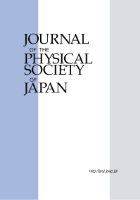
JOURNAL OF THE PHYSICAL SOCIETY OF JAPAN
Illuminating the Path of Scientific Inquiry since 1946The JOURNAL OF THE PHYSICAL SOCIETY OF JAPAN, published by the Physical Society of Japan, has been at the forefront of advancing knowledge in the field of Physics and Astronomy since its inception in 1946. With a commendable reputation reflected in its Q2 ranking within its category for 2023, this journal serves as a vital platform for disseminating high-quality research and innovative concepts. Researchers and professionals alike can engage with cutting-edge studies and reviews that span a diverse range of topics pivotal to the physical sciences. Although the journal does not currently operate with an open access model, it maintains a robust impact on the global physics community, evidenced by its placement in the 59th percentile among a competitive pool of 243 journals. With an unwavering commitment to bridging theory and application, the JOURNAL OF THE PHYSICAL SOCIETY OF JAPAN continues to inspire and cultivate scholarly discourse and collaboration across disciplines.